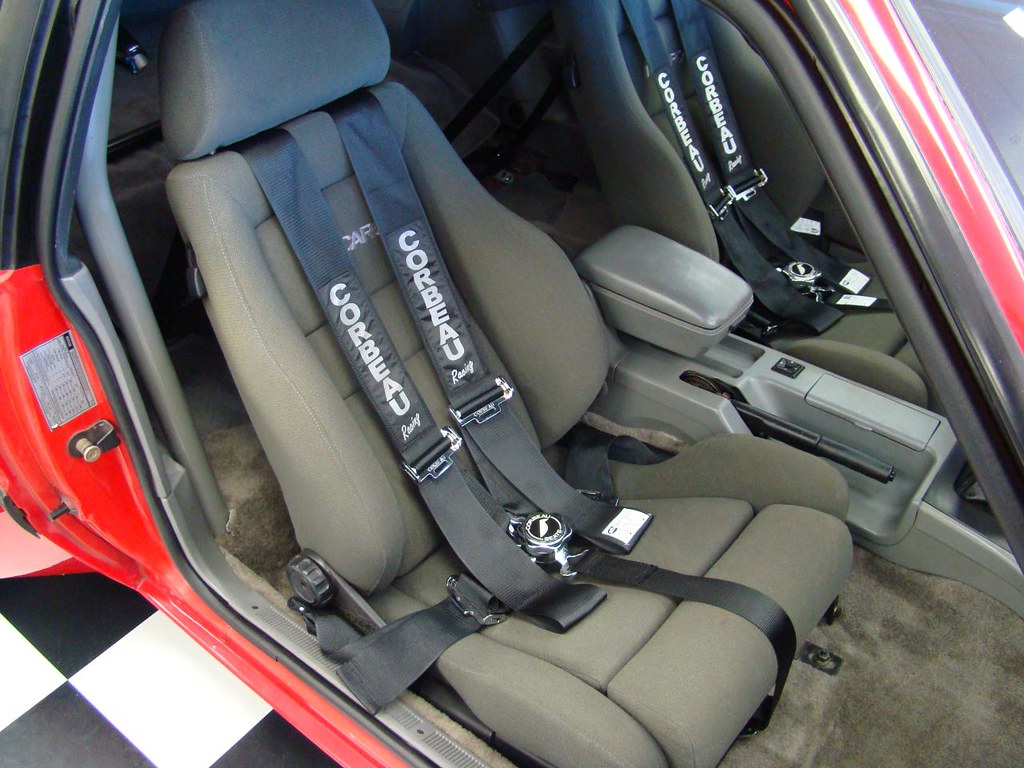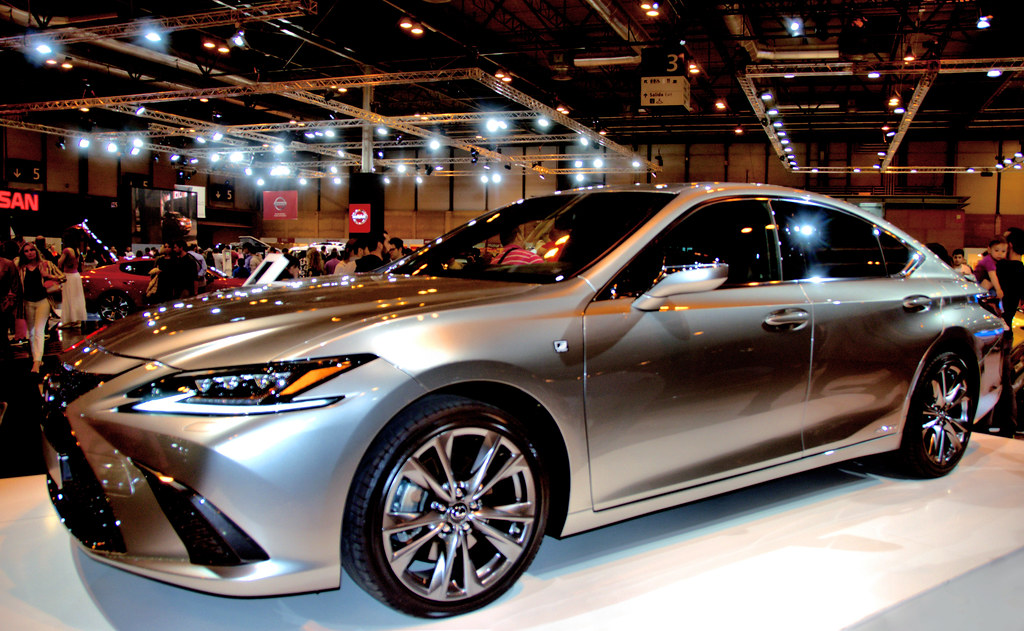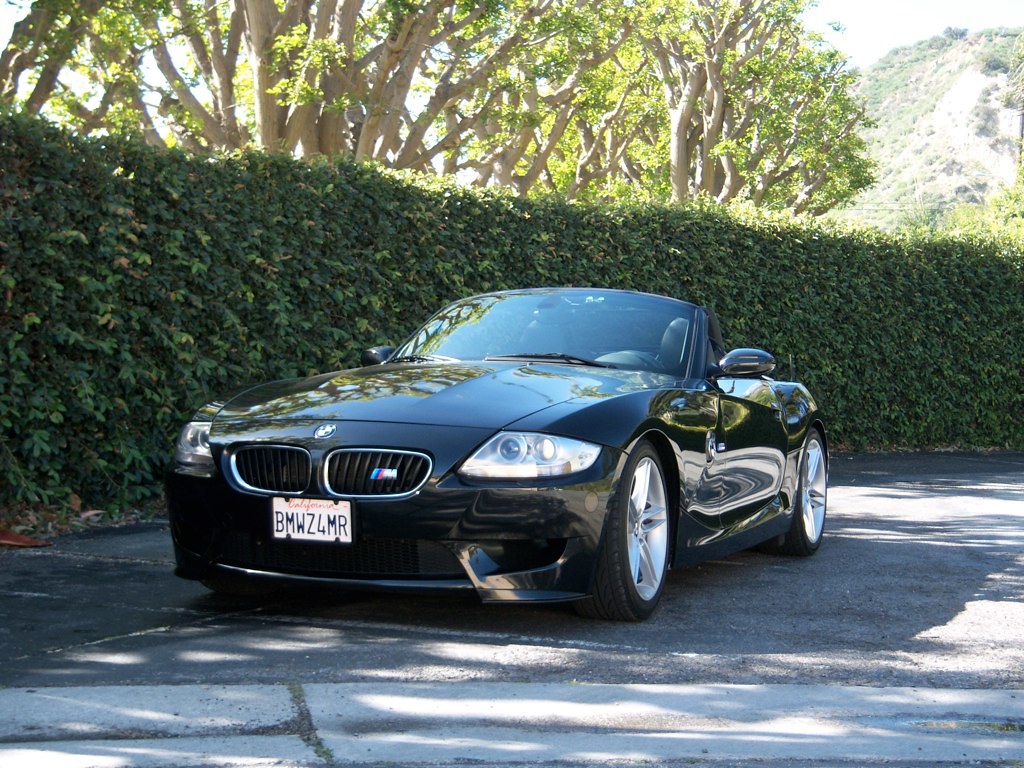
The automotive industry, a relentless crucible of innovation and ambition, has borne witness to an endless cycle of rise and fall. Throughout its storied history, countless companies and vehicle models, once hailed as beacons of progress or symbols of aspirational design, have spectacularly succumbed to the pressures of market shifts, economic turmoil, and critical internal misjudgments. The narratives of these once-revered stars, though ending in commercial failure or complete disappearance, offer invaluable insights into the intricate dynamics of a fiercely competitive landscape.
From grand visions that lacked pragmatic execution to designs that failed to resonate with the public, the stories of these fallen automotive giants serve as profound cautionary tales. They remind us that even the most audacious concepts and powerful brands are vulnerable to a confluence of factors, revealing how crucial it is to blend visionary leadership with astute business planning, market responsiveness, and unwavering commitment to quality. This article delves into the precise circumstances that precipitated the downfall of a selection of these prominent auto brands and iconic models, examining the unique challenges each faced and the enduring lessons their departures etched into the industry’s collective memory.
As we navigate these historical accounts, we uncover recurring themes—the perils of neglecting consumer preferences, the critical importance of financial prudence, and the unforgiving nature of economic downturns. These detailed examinations are not merely chronicles of failure but profound studies in resilience, adaptation, and the relentless pursuit of progress that continues to define the automotive world, even in the wake of its most significant setbacks.
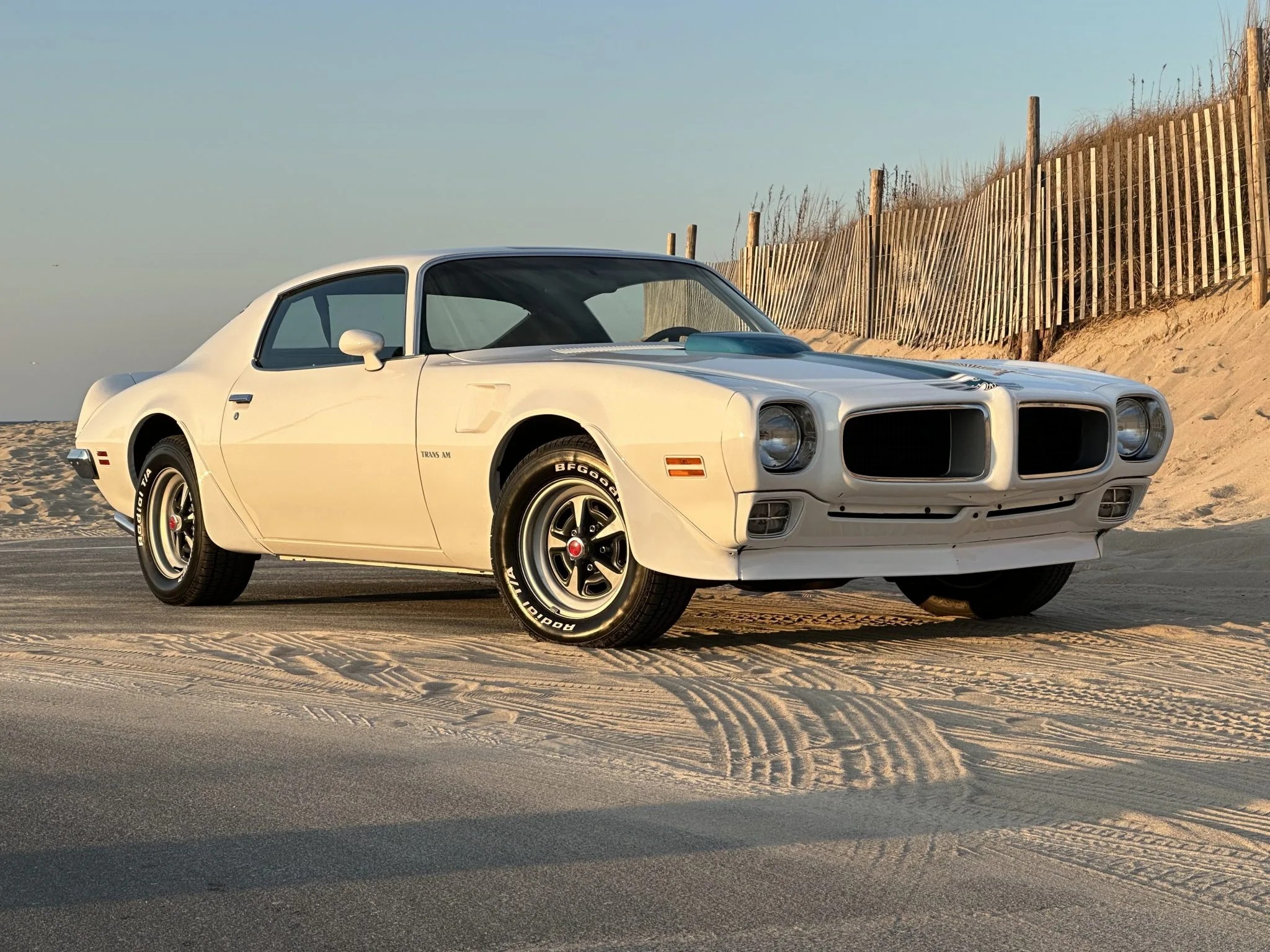
1. **Pontiac: The End of an Era for American Muscle**Pontiac, a venerated division of General Motors, etched its name into automotive lore with a lineup of high-performance vehicles that epitomized American muscle. Models such as the GTO, Firebird, and Trans Am were not merely cars; they were cultural statements, embodying power and rebellious spirit. For decades, Pontiac was synonymous with exhilarating driving experiences and bold, assertive styling that captured the imagination of a generation.
However, the brand’s trajectory began to shift dramatically in the 1970s. The global oil crisis of that era forced a monumental pivot across the entire automotive sector, compelling manufacturers to re-evaluate their strategies. Pontiac, once celebrated for its robust, powerful engines, was pressured to transition towards producing more fuel-efficient cars, a move that fundamentally challenged its core identity.
This strategic redirection, while a response to urgent economic realities, unfortunately diminished Pontiac’s unique standing as a performance brand. The essence that had defined it for so long became diluted as it attempted to adapt to new market demands. Ultimately, despite its rich heritage and loyal following, Pontiac succumbed to General Motors’ broader restructuring efforts, leading to its official discontinuation in 2010. Its demise marked the end of an era for a brand that once roared with unrestrained power.
Read more about: From Pontiac’s GT-37 ‘Holy Grail’ to Hemi Convertibles: Uncovering the Rarest Muscle Car Treasures You Never Knew Existed
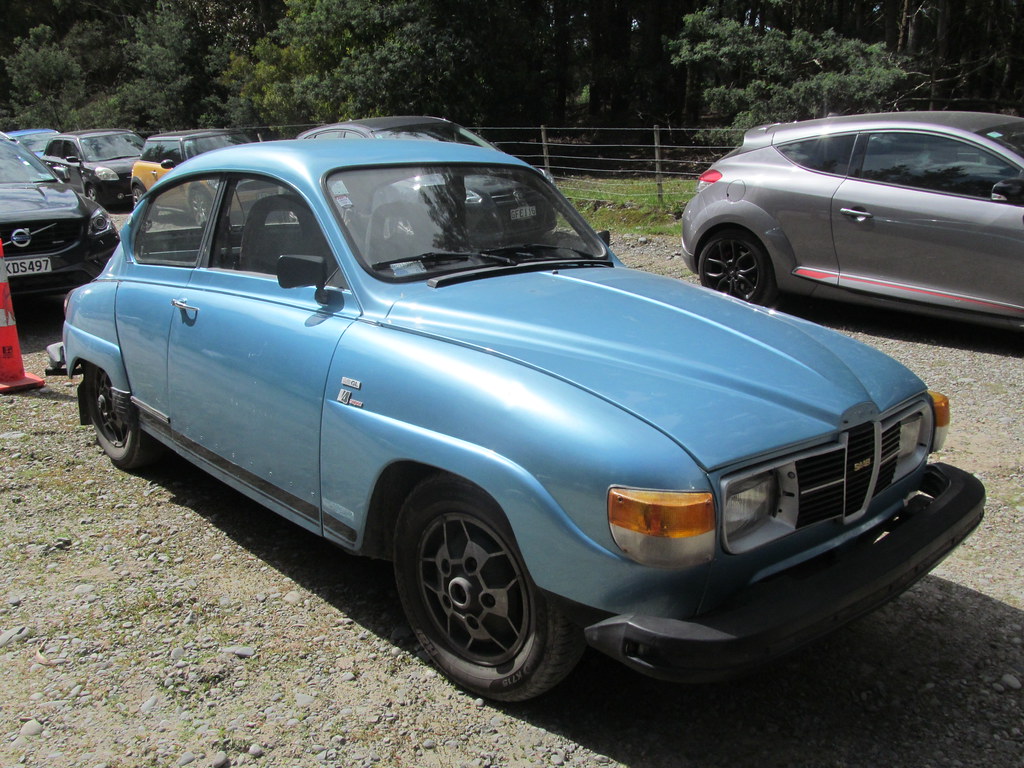
2. **Saab: A Victim of Financial Turmoil**Saab, the enigmatic Swedish automaker, carved out a distinctive niche in the global market, celebrated for its quirky designs, pioneering safety innovations, and the exhilarating punch of its turbocharged engines. Despite cultivating an intensely loyal fanbase, drawn to its unique blend of Scandinavian sensibility and engineering prowess, Saab found itself increasingly entangled in a web of financial struggles.
These difficulties were primarily fueled by a relentless decline in sales and the escalating intensity of competition from larger, more globally dominant automakers. The brand’s modest scale and niche appeal made it particularly vulnerable in an industry increasingly dominated by economies of scale and vast marketing budgets. Its distinctiveness, while cherished by enthusiasts, struggled to translate into mass market appeal in an evolving landscape.
General Motors’ acquisition of Saab in 2000, initially viewed as a potential lifeline, ultimately failed to reverse the brand’s fortunes. Despite significant investment and integration attempts, Saab continued to languish. Following a tumultuous series of unsuccessful ownership changes and desperate attempts to find a sustainable path forward, the company was ultimately forced to declare bankruptcy in 2011, closing a chapter on one of the automotive world’s most individualistic marques.
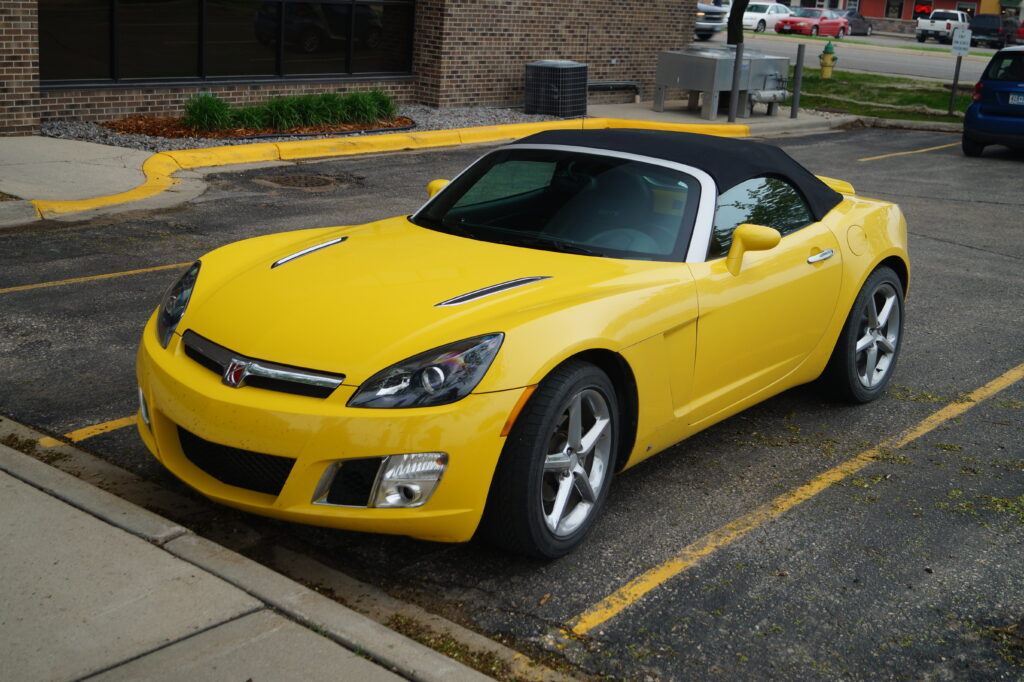
3. **Saturn: A Fallen Star in the Automotive Galaxy**Saturn was conceived by General Motors as a bold, ambitious venture, launched in 1990 with the express purpose of directly challenging the burgeoning dominance of Japanese automakers within the small-car market. It was an experiment in a new way of doing business, distinguished by its innovative “no-haggle” pricing strategy, which aimed to simplify the car-buying experience, and its distinctive polymer body panels, designed for resilience against dents and dings.
Initially, Saturn enjoyed a period of considerable success, earning a reputation for strong customer service and a fresh approach to automobile retailing. Its early models resonated with consumers seeking an alternative to traditional domestic offerings and foreign imports, creating a dedicated following that appreciated its unique philosophy. The brand represented a hopeful new direction for American manufacturing.
However, this initial momentum proved challenging to sustain. A critical factor in Saturn’s eventual decline was a persistent lack of new models, which hindered its ability to keep pace with rapidly advancing competition. This stagnation, combined with increased market saturation and General Motors’ own escalating financial woes in the late 2000s, created an insurmountable challenge. The once-promising star ultimately faded, leading to the discontinuation of the brand in 2010, marking the end of a unique experiment.

4. **Hummer: The Heavyweight That Couldn’t Stand the Test of Time**Hummer, with its unmistakable rugged, military-inspired vehicles, emerged as a potent symbol of American excess and boldness during the early 2000s. These imposing machines, characterized by their immense size and formidable presence, projected an image of unstoppable power and uncompromising capability. They captured the zeitgeist of a particular era, appealing to consumers who desired a vehicle that stood out in every possible way.
However, the very attributes that made Hummer popular quickly became its undoing as external factors fundamentally reshaped consumer priorities. As gas prices experienced significant surges and environmental concerns gained increasing prominence in public discourse, a discernible shift occurred in consumer preferences. The market began to lean decisively towards more fuel-efficient and environmentally conscious vehicles, leaving Hummer’s gas-guzzling image at odds with evolving societal values.
General Motors’ efforts to divest the brand in 2009, as the economic climate worsened and public sentiment turned, ultimately proved unsuccessful. No suitable buyer could be found to salvage the brand, which had become a symbol of an unsustainable past. Consequently, Hummer was officially discontinued in 2010, serving as a stark reminder of how rapidly market conditions and consumer tastes can pivot, even for the most iconic and visually dominant brands.
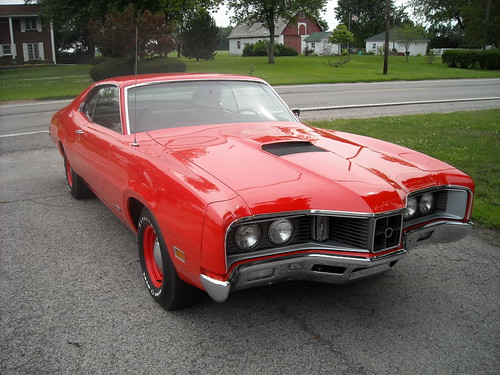
5. **Mercury: Fading Away in Ford’s Shadow**Mercury, established as a division of the Ford Motor Company, was originally conceived with a clear strategic purpose: to bridge the perceived gap between Ford’s ubiquitous mainstream vehicles and the luxurious, premium offerings of its Lincoln brand. It aimed to provide a mid-tier option for consumers seeking something more upscale than a Ford but not quite in the luxury segment of a Lincoln, offering a blend of affordability and sophistication.
Over many decades, however, Mercury struggled significantly to cultivate and maintain a distinct identity in the crowded automotive marketplace. A primary factor contributing to this erosion of its unique appeal was the practice of badge engineering, where many of its models were essentially rebadged versions of Ford vehicles, with only minor cosmetic differences. This made it difficult for consumers to perceive Mercury as truly unique or innovative.
This lack of differentiation ultimately led to a slow, gradual decline in relevance and appeal. Recognizing the diminishing returns and the need to streamline its operations, Ford made the decisive strategic decision in 2010 to discontinue the Mercury brand. The company chose instead to concentrate its resources and marketing efforts on strengthening its core Ford and Lincoln brands, allowing Mercury to quietly fade away into automotive history.
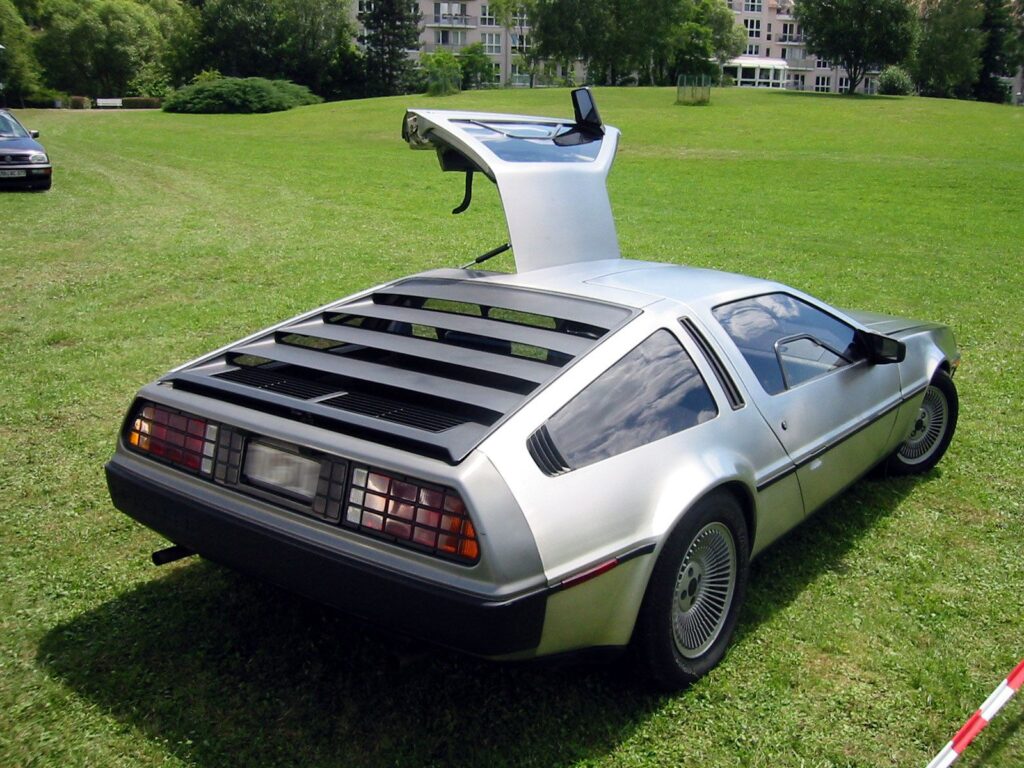
6. **DeLorean DMC-12: The Visionary Dream That Collapsed**The DeLorean DMC-12, an automotive icon irrevocably linked to popular culture, roared to life with its gullwing doors and sleek stainless steel body. Launched in 1981 by the DeLorean Motor Company, founded by General Motors’ rising star John DeLorean in 1975, the car embodied a radical vision for design. Its distinctive appearance, manufactured in Northern Ireland, instantly made it stand out from anything else on the road, generating significant buzz among enthusiasts and the public alike.
Despite its striking aesthetics and initial fanfare, the DMC-12 was plagued by a confluence of critical issues. Critics highlighted that while John DeLorean excelled in car design, he “lacked the operational skills to translate his vision into reality.” His intense focus on design meant he “failed to make a viable business plan, secure enough investors, or accurately forecast market demand.” Production delays and cost overruns quickly depleted the company’s capital, forcing unfavorable financing terms and ceding control.
The car’s performance specifications, including a 0-60 mph time of 10.5 seconds and a fuel economy of 19 mpg highway, paled in comparison to rivals like the Corvette, especially given its $25,000 base price. This lackluster acceleration and impractical design, coupled with the onset of the early 1980s recession, diminished buyer interest. The company began “hemorrhaging money” by 1982, desperate for capital. The final blow came when John DeLorean was “embroiled in a scandal” in late 1982, attempting to raise money through a drug deal. Though acquitted, the damage to his company and credibility was irreversible. DMC went bankrupt in early 1983, having produced under 9,000 vehicles against projections of 12,000 cars per month.
Car Model Information: 1981 Delorean DMC-12
Name: DMC DeLorean
Alt: 1983 DeLorean
Caption: 1983 DeLorean
Manufacturer: DeLorean Motor Company
Production: January 21, 1981 – December 1982
ModelYears: 1981–1983
Assembly: Dunmurry
Designer: Giorgetto Giugiaro
Class: Sports car
BodyStyle: coupé
Layout: Rear-engine, rear-wheel-drive layout
Doors: Gull-wing doors
Engine: 2.85 L
Abbr: on
Powerout: 130 hp
Transmission: 5-speed manual ,3-speed automatic
Wheelbase: 2413 mm
Length: 4267 mm
Width: 1988 mm
Height: 1140 mm
Weight: 1233 kg
Sp: us
Categories: 1980s cars, All Wikipedia articles written in American English, Articles with short description, Automobiles with backbone chassis, Automobiles with gull-wing doors
Summary: The DMC DeLorean is a rear-engine, two-seat sports car manufactured and marketed by John DeLorean’s DeLorean Motor Company (DMC) for the American market from 1981 until 1983—ultimately the only car brought to market by the fledgling company. The DeLorean is sometimes referred to by its internal DMC pre-production designation, DMC-12, although this was not used in sales or marketing materials for the production model.
Designed by Giorgetto Giugiaro, the DeLorean is noted for its gull-wing doors and brushed stainless-steel outer body panels, as well as its lack of power and performance. Though its production was short-lived, the DeLorean became widely known after it was featured as the time machine in the Back to the Future films.
With the first production car completed on January 21, 1981, the design incorporated numerous minor revisions to the hood, wheels and interior before production ended in late December 1982, shortly after DMC filed for bankruptcy and after total production reached an estimated 9,000 units.
Despite the car having a reputation for poor build quality and an unsatisfactory driving experience, the DeLorean continues to have a strong following, driven in part by the popularity of Back to the Future. 6,500 DeLoreans were estimated to still be on the road as of 2015.
Get more information about: DMC DeLorean
Buying a high-performing used car >>>
Brand: DeLorean Model: DMC-12
Price: $56,500 Mileage: 0 mi.
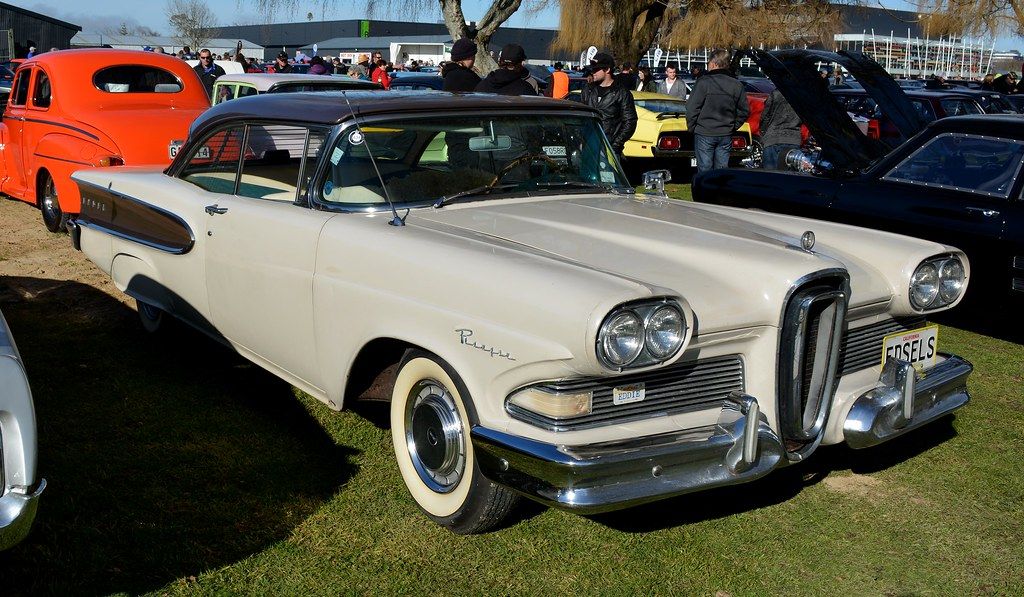
7. **Ford Edsel: A Case Study in Market Misalignment**The Ford Edsel, introduced with significant fanfare in 1958, was envisioned as a new, distinct line of cars designed to capture the attention of the burgeoning middle-class market. Its strategic placement was intended to neatly fill the perceived gap between Ford’s entry-level vehicles and the more premium offerings from its Mercury division. Despite immense investment and high expectations from within the Ford Motor Company, the Edsel rapidly devolved into one of the most notorious automotive failures in history.
Numerous factors conspired to hasten its downfall. Early reports highlighted pervasive quality control issues, including “faulty welds and leaky trunks,” which immediately eroded consumer confidence in the vehicle’s reliability. Furthermore, the introduction of a technologically ambitious yet deeply confusing feature known as “Teletouch” left many drivers baffled and frustrated, detracting from the driving experience rather than enhancing it.
Beyond these mechanical and operational shortcomings, public perception proved to be a critical, perhaps even defining, element of its failure. The Edsel’s design, particularly its distinctive horse-collar grille, was widely perceived as unattractive and idiosyncratic, failing to connect with the aesthetic preferences of the target demographic. The brand’s image, aggressively marketed yet deeply misunderstood, did not resonate, leading to dismal sales figures. Ford produced the Edsel for a mere three years, from 1958 to 1960, and its name has since become a byword for spectacular commercial failure within the automotive industry.
Car Model Information: 1958 Edsel Citation
BirthName: Edsel Bryant Ford
Caption: Ford in 1921
BirthDate: [object Object]
BirthPlace: Detroit, Michigan
DeathDate: [object Object]
DeathPlace: Grosse Pointe Shores, Michigan
Occupation: Automobile executive
Title: Ford Motor Company
Spouse: [object Object]
Parents: Henry Ford,Clara Bryant Ford
Relations: Edsel Ford II
Children: Henry Ford II,Benson Ford,Josephine Ford,William Clay Ford Sr.
Categories: 1893 births, 1943 deaths, 20th-century American businesspeople, All Wikipedia articles written in American English, All articles with dead external links
Summary: Edsel Bryant Ford (November 6, 1893 – May 26, 1943) was an American business executive and philanthropist, who was the only child of pioneering industrialist Henry Ford and his wife, Clara Jane Bryant Ford. He was the president of Ford Motor Company from 1919 until his death in 1943.
He worked closely with his father, as sole heir to the business, but was keen to develop cars more exciting than the Model T (“Tin Lizzie”), in line with his personal tastes. Even as president, he had trouble persuading his father to allow any departure from this formula. Only a change in market conditions enabled him to develop the more fashionable Model A in 1927. Edsel also founded the Mercury division and was responsible for the Lincoln-Zephyr and Lincoln Continental. He introduced important features, such as hydraulic brakes, and greatly strengthened the company’s overseas production.
Ford was a major art benefactor in Detroit and also financed Admiral Richard Byrd’s polar explorations. He died of stomach cancer aged 49. Henry Ford temporarily reassumed the presidency of Ford Motor Company on Edsel’s death, then Edsel’s eldest son, Henry Ford II, succeeded Henry as president of the company in 1945.
He was also a member of the board of directors of American IG, the American subsidiary of the German chemical conglomerate IG Farben.
Get more information about: Edsel Ford
Buying a high-performing used car >>>
Brand: Ford Model: Edsel
Price: Not Priced Mileage: 68,904 mi.

8. **Chevrolet SSR: The Unique Blend That Missed Its Mark**The Chevrolet SSR, a truly unique vehicle that rolled off production lines from 2003 to 2006, was an ambitious attempt to meld two seemingly disparate automotive concepts: the rugged utility of a pickup truck with the open-air thrill of a convertible. This retro-styled roadster aimed to evoke nostalgia while offering a distinctive blend of style and functionality. It was an intriguing proposition, designed to turn heads and cater to a specific, perhaps unconventional, segment of the market.
However, despite its eye-catching design, the SSR struggled significantly to meet sales expectations, never quite finding its footing with a broad audience. Many automotive critics and potential buyers quickly identified several key drawbacks that hampered its commercial viability. Its relatively high price point made it a luxury item, yet its limited cargo space, a crucial attribute for any pickup, diminished its practical appeal.
Furthermore, while its design was certainly distinctive, it did not universally resonate; some found it charmingly retro, while others considered it polarizing. Drivers also noted that the SSR’s ride could be uncomfortable, and its performance, while adequate, often felt lacking when compared directly to more traditional sports cars in its price bracket. Ultimately, Chevrolet’s creative gamble struggled to find widespread acceptance, and the SSR became known as a rare example of an automotive misstep, highlighting the challenges of combining disparate vehicle categories without clear market demand.
Car Model Information: 2004 Chevrolet SSR LS
Name: Chevrolet SSR
Manufacturer: Chevrolet
Production: 2003–2006
ModelYears: 2003–2006
Assembly: Lansing, Michigan
Class: Pickup truck
BodyStyle: ubl
Platform: GMT360
Related: ubl
Layout: Front-engine, rear-wheel drive layout
Engine: ubl
Transmission: ubl
Wheelbase: 116.0 in
Abbr: on
Length: ubl
Width: 78.6 in
Height: ubl
Designer: ubl
Categories: All articles needing additional references, All articles with unsourced statements, Articles needing additional references from July 2008, Articles with short description, Articles with unsourced statements from August 2023
Summary: The Chevrolet SSR (Super Sport Roadster) is a retro-styled and retractable hardtop convertible pickup truck manufactured by Chevrolet between 2003 and 2006.
During the 2003 and 2004 model years, the SSR used General Motors’ 5.3 L 300 hp (224 kW; 304 PS) Vortec 5300 V8. Performance was 7.7 seconds for 0–60 mph (0–97 km/h) with a 15.9 second 1⁄4 mile (402.3 m) time at 86.4 mph (139.0 km/h).
For the 2005 model year, the SSR used the 390 hp (291 kW; 395 PS) LS2 V8 engine also used in the C6 Corvette, Trailblazer SS, and Pontiac GTO, now offering a manual transmission option, the six-speed Tremec, for the first time. Performance improved dramatically with the LS2; the 6-speed manual version had an advertised 0–60 mph (97 km/h) acceleration time of 5.29 seconds. In addition, GM badges were added to the vehicle.
For 2006, output of the LS2 increased to 395 hp (295 kW; 400 PS).
Get more information about: Chevrolet SSR
Buying a high-performing used car >>>
Brand: Chevrolet Model: SSR
Price: $21,799 Mileage: 54,685 mi.
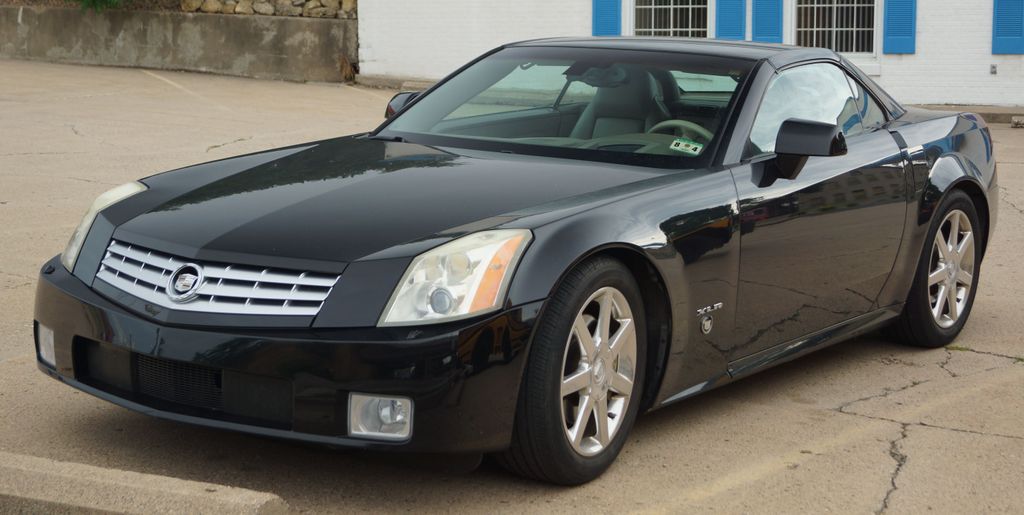
9. **Cadillac XLR / XLR-V: A Luxury Offering That Lost Its Way**The Cadillac XLR, introduced in 2004, represented General Motors’ ambitious foray into the luxury sports car segment, positioned squarely against established European rivals. Built upon the robust and proven platform of the Chevrolet Corvette, the XLR aimed to attract a distinct market segment—buyers seeking sophistication and open-air driving pleasure without sacrificing the performance inherent to its underlying architecture. Its design, while sharing some mechanical foundations, distinctly channeled Cadillac’s evolving aesthetic, offering a blend of sharp lines and upscale features.
Despite its promising foundation and sleek design, the XLR found itself struggling significantly to resonate with its intended audience, failing to secure the sales figures Cadillac had projected. A primary critique revolved around its pricing; many automotive observers and potential consumers felt it was positioned too high for its perceived value, especially when compared directly to its Corvette sibling or more aspirational European competitors. This pricing strategy inadvertently created a disconnect between its luxury aspirations and its performance reality.
In an effort to bolster its appeal and address criticisms regarding its power, Cadillac introduced the XLR-V variant, featuring a more potent engine. While this iteration offered an improved performance profile, it ultimately did not provide the significant boost in sales or market presence that the brand had anticipated. The core issues of price-to-performance ratio and market positioning continued to hamper its broader acceptance, suggesting a deeper misalignment with consumer expectations.
The marketing strategies employed for the XLR also appeared to miss their mark, failing to effectively communicate the vehicle’s unique advantages or its place within the luxury segment. This oversight meant that many of its distinct features and inherent value propositions were not adequately highlighted, contributing to its commercial decline. The Cadillac XLR, therefore, stands as a compelling case study on the critical importance of market alignment and effective communication in the fiercely competitive luxury automotive sector.
Car Model Information: 2004 Cadillac XLR Base
Name: Cadillac XLR
Manufacturer: Cadillac
Production: 2003–2009
ModelYears: 2004–2009
Predecessor: Cadillac Allanté
Class: Grand tourer
BodyStyle: roadster (automobile)
Layout: FR layout
Platform: GM Y platform
Assembly: Bowling Green, Kentucky
Designer: Tom Peters (prod. exterior: 1999, 2000)
Related: Chevrolet Corvette (C5),Chevrolet Corvette (C6)
Transmission: GM 5L40-E transmission#5L50,GM 6L80 transmission
Engine: Northstar engine series#LH2 (VIN “A”),V8 engine
Wheelbase: cvt
Length: cvt
Width: cvt
Height: cvt
Weight: cvt
Categories: Articles with short description, Cadillac vehicles, Cars discontinued in 2009, Cars introduced in 2003, Commons category link from Wikidata
Summary: The Cadillac XLR is a two-passenger roadster manufactured and marketed by Cadillac from 2003 to 2009 across a single generation — and noted for its power retractable hardtop, Bulgari designed interior instruments, head-up display, adaptive suspension, rear-mounted transmission and near 50/50 front-to-rear weight distribution. The XLR was introduced at the 2003 North American International Auto Show as a halo model for Cadillac, and began production for the 2004 model year. The design was inspired by the 1999 Evoq concept.
The XLR shares much of its construction design with the C6 Chevrolet Corvette that was introduced one year later, including its GM Y platform, hydroformed steel perimeter side rails, folded steel backbone, tubular steel front and rear bulkheads, aluminum windshield structure, magnesium steering-column mounts, aluminum/balsawood composite floorboards and composite bodywork technology. Unique to the XLR are its engine, bodywork, interior, suspension settings, and power retractable hardtop. Both Chevrolet and Cadillac were manufactured at GM’s Bowling Green Assembly, with the XLR manufactured at a dedicated work station adjacent to the Corvette assembly line, engineered to facilitate routing of componentry to the XLR’s dedicated assembly station.
The XLR entered production a year before the Chevrolet, as the first production Cadillac with radar-based adaptive cruise control (ACC) or both heated and cooled seats — was subsequently nominated for the North American Car of the Year award for 2004.
Get more information about: Cadillac XLR
Buying a high-performing used car >>>
Brand: Cadillac Model: XLR
Price: $35,999 Mileage: 3,370 mi.
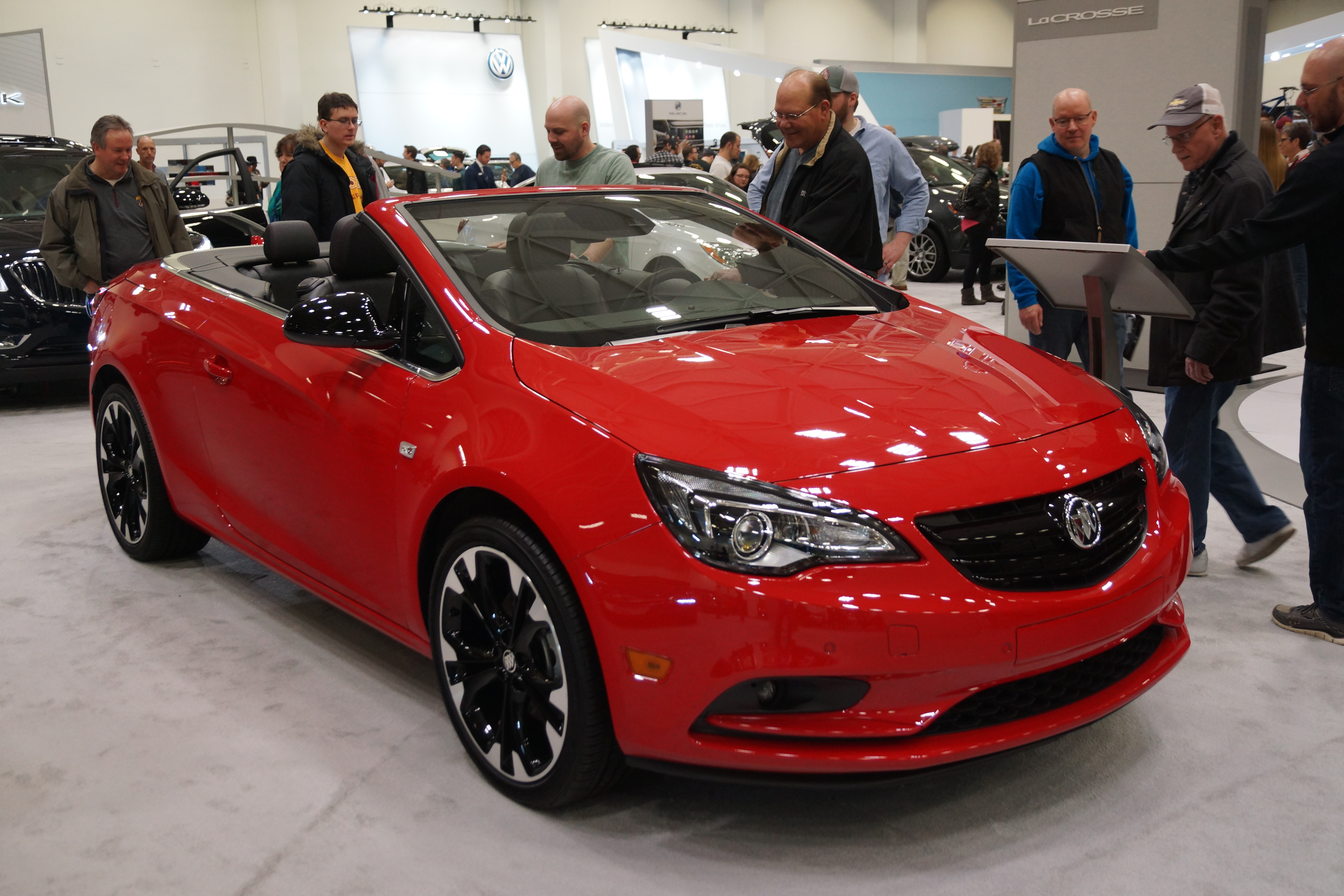
10. **Buick Cascada: The Convertible That Couldn’t Catch On**Buick’s re-entry into the convertible market in 2016 with the Cascada was an attempt to offer consumers a blend of stylish design and the visceral experience of open-air driving. This move aimed to rejuvenate the brand’s image, traditionally associated with more conservative sedans and SUVs, by tapping into a niche yet appealing segment. The Cascada presented an attractive silhouette and a promise of accessible luxury, embodying a desire to broaden Buick’s appeal to a wider demographic.
However, despite its visually appealing exterior and the novelty of a Buick convertible, the Cascada struggled profoundly within the highly competitive convertible market. Its sales figures consistently fell below expectations, a challenge that ultimately led to its discontinuation in 2019, marking a relatively short production run. This commercial underperformance indicated that the vehicle failed to capture the imagination or wallets of a sufficient number of buyers.
Industry critics and consumers alike often cited the Cascada’s pricing as a significant hurdle. Many perceived it as being priced too high for a midsize car that, despite its comfortable ride and well-appointed interior, did not deliver the exhilarating performance commonly associated with and expected from a sports-oriented convertible. This gap between price, features, and driving dynamics proved to be a critical impediment to its success.
Ultimately, the Buick Cascada became emblematic of a misunderstanding in automotive design and market placement. While it offered a stylish option and a pleasant driving experience for some, it failed to resonate with a larger audience seeking more than just aesthetics. Its journey through the market serves as a stark reminder of the challenges in differentiating a product effectively in a crowded segment, highlighting that even attractive designs require robust performance and strategic pricing to succeed.
Car Model Information: 2018 Buick Cascada Premium
Name: Opel Cascada
Manufacturer: Opel
Aka: Buick
Production: 2013–2019
Assembly: Gliwice
Predecessor: Opel Astra#H
Class: Compact car
BodyStyle: convertible
Layout: Front-engine, front-wheel-drive layout
Platform: GM Delta platform
Engine: ubl
Transmission: GM F40 transmission,Manual transmission
Wheelbase: 2695 mm
Abbr: on
Length: 4696 mm
Width: 1839 mm
Height: 1443 mm
Weight: convert
Related: Opel Astra
Designer: Mark Adams (designer)
Categories: Articles with short description, Cars discontinued in 2019, Cars introduced in 2013, Cars of Poland, Commons category link is on Wikidata
Summary: The Opel Cascada is a four-passenger fabric-roof convertible, manufactured and marketed by Opel across a single generation for model years 2013 through 2019, prioritizing year-round touring comfort over sportiness.
Nearly identical badge engineered variants were marketed globally using the Cascada nameplate under four General Motors brands: Opel, Vauxhall, Holden, and Buick. It was also sold under the Opel Cabrio nameplate in Spain.
The 2+2 convertible was engineered at Opel’s International Technical Engineering Center in Rüsselsheim, Germany, and was styled under the direction of Mark Adams, head of Opel design, at Opel’s Rüsselsheim Design Center, with Andrew Dyson (exterior) and Elizabeth Wetzel (interior).
After debuting at the 2012 Geneva Auto Show, the brand variants were manufactured in Gliwice, Poland, up until assembly ended on 28 June 2019, with a combined total of 48,500 produced and the final Cascada manufactured for the US market.
The Cascada derives its name from the Spanish word for waterfall.
Get more information about: Opel Cascada
Buying a high-performing used car >>>
Brand: Buick Model: Cascada
Price: $19,500 Mileage: 37,281 mi.
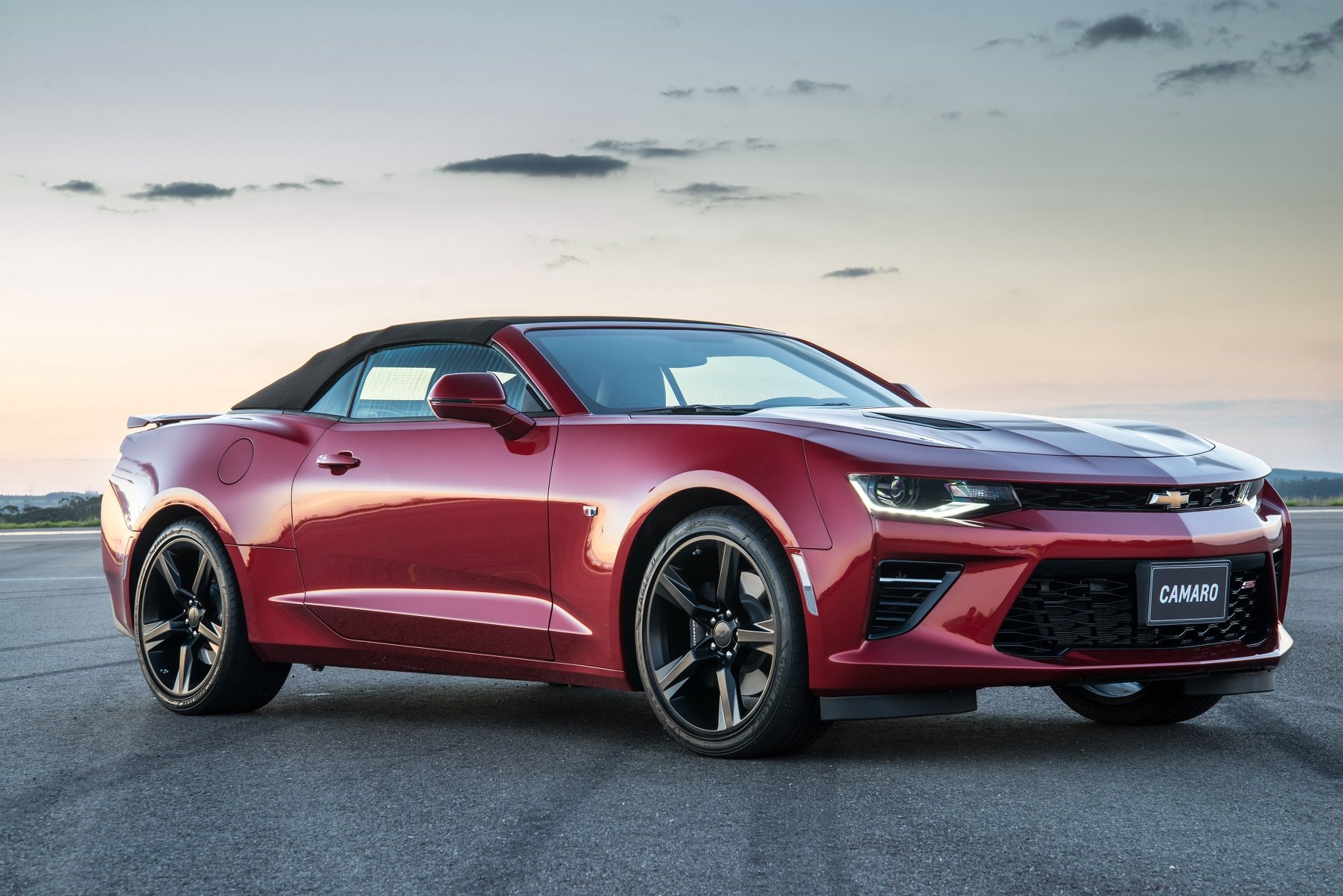
11. **Chevrolet Tahoe Hybrid: An Eco-Aspiration That Fell Short**The Chevrolet Tahoe Hybrid, introduced with the commendable goal of combining the rugged power and spacious utility of a full-size SUV with the enhanced fuel efficiency of hybrid technology, represented a significant engineering endeavor. It aimed to offer a more environmentally conscious option within a traditionally gas-guzzling segment, appealing to consumers who desired both substantial capability and a reduced ecological footprint. This blend of attributes was an ambitious proposition, designed to meet evolving consumer demands.
However, in practice, the Tahoe Hybrid faced numerous challenges that ultimately undermined its commercial viability. A recurring complaint among drivers concerned the reliability of its complex hybrid system, with reports surfacing of inconsistent performance and unexpectedly high maintenance costs. These issues eroded consumer confidence and contributed to a sense of disappointment among early adopters, directly contradicting the promise of a superior ownership experience.
Furthermore, the vehicle’s actual fuel economy ratings, a cornerstone of its hybrid appeal, often fell short of initial expectations and competitive benchmarks. This discrepancy caused many potential buyers to question the tangible benefits of choosing the hybrid model over its traditional gasoline-powered counterpart, thereby diminishing its unique selling proposition. The perceived advantage of a hybrid powertrain was not consistently delivered in real-world driving conditions.
The Chevrolet Tahoe Hybrid struggled to establish a firm foothold in a competitive market already populated by more reliable and often more cost-effective traditional SUV options. Its inability to deliver consistently on its core promises of reliability and superior fuel efficiency led to a significant lack of consumer interest, impacting sales and ultimately contributing to its designation as a commercial failure. The model underscores the difficulty of integrating advanced technologies without compromising established expectations for performance and dependability.
Car Model Information: 2025 Toyota Camry SE
Name: Chevrolet Tahoe,GMC Yukon
Manufacturer: General Motors
Production: 1991–present (Yukon),1994–present (Tahoe)
Class: Full-size SUV
Related: Cadillac Escalade,Chevrolet Suburban,Chevrolet Silverado,Hummer H2
Layout: Front-engine, rear-wheel-drive layout
Predecessor: Chevrolet K5 Blazer
Caption: 2022 Chevrolet Tahoe RST (fifth generation)
Categories: 2000s cars, 2010s cars, 2020s cars, All-wheel-drive vehicles, All articles with unsourced statements
Summary: The Chevrolet Tahoe () is a line of full-size SUVs from Chevrolet marketed since the 1995 model year. Marketed alongside the GMC Yukon for its entire production, the Tahoe is the successor of the Chevrolet K5 Blazer; the Yukon has replaced the full-sized GMC Jimmy. Both trucks derive their nameplates from western North America, with Chevrolet referring to Lake Tahoe; GMC, the Canadian Yukon.
Initially produced as a three-door SUV wagon, a five-door wagon body was introduced for 1995, ultimately replacing the three-door body entirely. The five-door wagon shares its body with the Chevrolet and GMC Suburban (today, GMC Yukon XL) as a shorter-wheelbase variant. Since 1998, the Tahoe has served as the basis of the standard-wheelbase GMC Yukon Denali and Cadillac Escalade luxury SUVs. The Tahoe is sold in North America, parts of Asia such as the Philippines, and the Middle East, plus other countries including Bolivia, Chile, Peru, Colombia, Ecuador, and Angola as a left-hand-drive vehicle. The Yukon is only sold in North America and the Middle East.
The Tahoe has regularly been the best-selling full-size SUV in the United States, frequently outselling its competition by two to one.
Get more information about: Chevrolet Tahoe
Buying a high-performing used car >>>
Brand: Chevrolet Model: Tahoe Hybrid
Price: $29,200 Mileage: 37,768 mi.

12. **Aptera Motors 2e: A Visionary Electric Dream Unfulfilled**The Aptera Motors 2e emerged as a truly avant-garde electric vehicle, captivating attention with its radically unique, three-wheeled structure and an unwavering focus on aerodynamic efficiency. Designed to push the boundaries of automotive design and fuel economy, the 2e represented a bold vision for future personal transportation, promising unprecedented efficiency and a distinctive aesthetic that defied conventional automotive classifications. It was positioned as a groundbreaking alternative for environmentally conscious drivers.
Despite the enthusiasm surrounding its innovative approach, Aptera Motors encountered significant headwinds that proved insurmountable for the nascent company. The prevailing economic conditions of the late 2000s created an exceptionally challenging environment for attracting and securing the substantial investor funding necessary for scaling production and development. This critical lack of financial backing ultimately led to the company’s unfortunate cessation of operations in 2011, leaving its revolutionary vehicle largely unrealized.
Many industry observers and potential customers admired the 2e for its ambitious potential, recognizing its groundbreaking efficiency targets and futuristic design. However, the company consistently struggled to translate these promises into a tangible, mass-produced product. Persistent issues related to production scalability, supply chain management, and the overarching complexities of bringing a novel vehicle to market without sufficient capital contributed significantly to its eventual downfall.
The saga of Aptera Motors and its 2e model serves as a profound cautionary tale for electric vehicle startups, illustrating the immense difficulties inherent in transforming a novel concept into a viable commercial enterprise. Despite possessing a genuinely innovative idea, the 2e could not overcome the formidable obstacles of funding, operational execution, and market penetration, demonstrating that even the brightest ideas require robust financial and logistical backing to stand the test of time.
Car Model Information: 2025 Toyota Camry SE
Name: Aptera Motors Corp.
Logo: Apteralogo.png
LogoSize: 200px
Type: Private company
Founded: 2019
Founders: Unbulleted list
NumEmployees: 33
NumEmployeesYear: 2024
HqLocationCity: Carlsbad, California
HqLocationCountry: United States
AreaServed: not yet in production
KeyPeople: Unbulleted list
Industry: Automotive industry
Products: Aptera solar EV
NetIncome: Unbulleted list
Class: nowrap
Assets: Unbulleted list
Homepage: aptera.us
Categories: 2005 establishments in California, 2011 disestablishments in California, 2019 establishments in California, All articles containing potentially dated statements, Articles containing potentially dated statements from 2006
Summary: Aptera Motors Corp. is an American crowd-funded, pre-production startup company based in Carlsbad, California which intends to manufacture an electric two-seat three-wheeler. The company had raised $140 million from 2019 to April 2025, and had planned to start deliveries of its vehicles since 2021. As of April 2025, initial sales of the vehicle are planned for 2026 and full-scale production is planned for 2028, with the company intending to raise $60 million for the start of low-volume production.
Aptera Motors Inc. was founded in 2006. The company was liquidated in 2011 with no vehicles mass-produced. A second company named Aptera USA owned by Zhejiang Jonway Group was launched in 2012 but it produced no vehicles. A third company, Aptera Motors Corp, was relaunched by the original founders in 2019.
Get more information about: Aptera Motors
Buying a high-performing used car >>>
Brand: Aptera Motors Model: 2e
Price: $29,200 Mileage: 37,768 mi.

13. **Pontiac Aztek: The SUV That Divided a Nation**Launched in 2001, the Pontiac Aztek was conceived as a bold attempt to attract a younger, more adventurous demographic to the SUV market. It sought to differentiate itself through a highly functional, versatile design that combined elements of an SUV, a minivan, and a camping vehicle, aiming for a demographic that valued utility and a distinctive aesthetic. The vehicle was equipped with features like a pull-out cargo tray, an optional tent, and built-in cooler, all designed to appeal to active lifestyles.
However, the Aztek’s distinguishing feature, its unique appearance, quickly became its most significant liability. Its unconventional styling, marked by a high-mounted grille, plastic cladding, and polarizing proportions, was met with widespread derision from both automotive critics and the general public. Many in the media and consumer surveys labeled it, often unequivocally, as one of the ugliest cars ever made, a perception that proved incredibly difficult to overcome.
The market’s pronounced negative reaction to its design directly impacted its commercial performance. Sales figures for the Aztek consistently remained dismal, failing to achieve the volume necessary to justify its production. This profound disconnect between Pontiac’s design intentions and consumer aesthetic preferences ultimately led to its discontinuation in 2005, marking a relatively brief and commercially unsuccessful stint in the market.
Even years after its demise, the Aztek’s reputation endures, frequently surfacing in discussions about spectacular automotive failures and design missteps. While a small contingent of enthusiasts have come to appreciate its quirky features and functional versatility, the overwhelming public opinion leans towards disdain for its aesthetics. The Aztek’s story serves as a potent reminder of the critical importance of design appeal and astute marketing strategies in successfully navigating the fiercely competitive automotive industry.
Car Model Information: 2004 Pontiac Aztek 4dr All Purpose FWD
Name: Pontiac Aztek
Manufacturer: General Motors
Production: July 2000 – December 2004
Assembly: Ramos Arizpe
Designer: Tom Peters (chief designer: 1997)
Class: Mid-size crossover SUV
BodyStyle: SUV
Platform: GM U platform
Related: Buick Rendezvous
Layout: Front-engine, front-wheel-drive layout
Engine: General Motors 60° V6 engine#LA1,V6
Transmission: GM 4T65-E transmission,Automatic transmission
Wheelbase: 108.3 in (2,751 mm)
Length: 182.1 in (4,625 mm)
Width: 73.7 in (1,872 mm)
Height: 66.7 in (1,694 mm)
Weight: 3,779–4,043 lb (1,714–1,834 kg)
Predecessor: Pontiac Sunrunner
Successor: Pontiac Torrent
ModelYears: 2001–2005
Categories: All-wheel-drive vehicles, All articles needing additional references, All articles with unsourced statements, Articles needing additional references from October 2013, Articles with short description
Summary: The Pontiac Aztek is a mid-size crossover SUV marketed by General Motors introduced in 2000 for the model years 2001 through 2005. As a four-door crossover with front-wheel drive and optional all-wheel drive, the Aztek featured a four-speed automatic transmission with a V6 engine. Marketed by Pontiac as a “sport recreational vehicle,” the Aztek used a shortened platform shared with GM’s minivans (e.g., the Pontiac Montana) featuring 94 cubic feet of cargo room with its rear seats removed. The design employed conventional rear outswing doors rather than sliding doors, and a split rear tailgate, the lower section formed with seat indentations and cupholders. Other features included a front center console that doubled as a removable cooler, optional rear stereo controls in the cargo area, optional sliding cargo floor with grocery compartments, and optional camping package with an attachable tent and air mattress.
Get more information about: Pontiac Aztek
Buying a high-performing used car >>>
Brand: Pontiac Model: Aztek
Price: $995 Mileage: 0 mi.

14. **Amphicar Model 770: The Car That Wanted to Swim**The Amphicar Model 770, a marvel of mid-20th-century automotive ambition, holds a unique place in history as a true amphibious vehicle. Produced in Germany during the 1960s, this remarkable creation was designed to seamlessly transition from road travel to navigating waterways, embodying an imaginative vision to combine two distinct modes of transportation into a single, versatile machine. Its twin propellers and distinctive maritime features made it an instant curiosity.
Despite the sheer novelty and innovative spirit behind its concept, the Amphicar struggled significantly to achieve commercial success. A fundamental challenge lay in its performance; it was often deemed mediocre in both environments. On land, it handled acceptably, powered by a modified Triumph Herald engine, but it lacked the speed and agility of conventional cars. In water, while capable of reaching speeds of up to 7 knots (approximately 8 mph), this was considered slow for boating standards, rendering it less appealing to serious water enthusiasts.
Its hybrid nature meant that while it could perform both functions, it excelled at neither, creating a dilemma for potential buyers. The maintenance requirements for a vehicle exposed to both road salt and fresh or saltwater environments were also complex and often costly, adding another layer of impracticality. The niche market it aimed for proved to be far too small to sustain mass production.
Today, the Amphicar Model 770 has transcended its commercial shortcomings to become a highly sought-after classic among collectors and enthusiasts, admired for its quirky design, historical significance, and extreme rarity. Its story remains a prime example of daring ambition meeting the harsh realities of practicality and market demand in automotive history, illustrating that innovation, however charming, must be paired with superior execution and clear utility to achieve widespread acceptance.
Car Model Information: 2025 Toyota Camry SE
Caption: Amphicar Model 770
Name: Amphicar Model 770
Manufacturer: Quandt Group
Production: 1960–1965,3,878 built
ModelYears: 1960–1968
BodyStyle: 2-door cabriolet,with boat features
Layout: RR layout
Engine: straight-4
Transmission: Manual transmission
Length: 171 in
Abbr: oncite book
Width: 62 in
Height: 60 in
Weight: convert
Wheelbase: 84 in
Last: Cardew
First: Basil
Title: Daily Express Review of the 1966 Motor Show
Year: 1966
Publisher: Beaverbrook Newspapers Ltd
Location: London
Designer: Hans Trippel
Powerout: 38 bhp
Categories: Articles with short description, CS1 maint: publisher location, Cars of Germany, Commons category link is on Wikidata, Rear-engined vehicles
Summary: The Amphicar Model 770 is an amphibious automobile which was launched at the 1961 New York Auto Show. It was made in West Germany and marketed from 1961 to 1968, with production ceasing in 1965.
Designed by Hans Trippel, the amphibious vehicle was manufactured by the Quandt Group at Lübeck and at Berlin-Borsigwalde, with a total of 3,878 manufactured in a single generation. The name Amphicar is a portmanteau of “amphibious” and “car”.
A spiritual descendant of the Volkswagen Schwimmwagen, and the Trippel SG6, the Amphicar offered only modest performance compared to most contemporary boats or cars, featured navigation lights and flag as mandated by the US Coast Guard – and after operation in water, required greasing at 13 points, one of which required removal of the rear seat.
In 2014, the publication Petrolicious described the Amphicar as “good for one thing: fun. It’s not quick or flashy, but it’s iconic, unique and friendly. What more could you ask from a vintage car? The Amphicar might not make any sense and that’s precisely why it’s so wonderful.”
Get more information about: Amphicar
Buying a high-performing used car >>>
Brand: Amphicar Model: Model 770
Price: $29,200 Mileage: 37,768 mi.

15. **Trabant: The Symbol of an Era’s Limitations**The Trabant, produced in East Germany from 1957 to 1990, became far more than just a car; it evolved into a potent symbol of the country’s profound economic struggles and the pervasive effects of centralized government control during the Cold War era. Distinguished by its body panels largely constructed from Duroplast, a unique plastic-like material made from recycled cotton waste and resins, it represented the ingenuity born of necessity in an austere economy.
Despite its numerous functional flaws and basic design, the Trabant held a paradoxical popularity, primarily due to its extreme affordability and, crucially, its status as one of the very few personal vehicles available. This made it an aspirational object for many East Germans, who often endured agonizingly long waiting lists—sometimes stretching over a decade—just to acquire one. Such extended waits underscored the severe limitations and inefficiencies inherent in a planned economy.
The vehicle was notorious for its rudimentary engineering: a tiny, noisy, two-stroke engine infamous for producing excessive smoke and offering minimal power, making acceleration a protracted affair. Frequent breakdowns and a distinct lack of modern features further cemented its reputation, with many contemporary critics and owners labeling it among the worst cars ever made. It offered a driving experience that prioritized basic transportation over comfort, performance, or reliability.
Even with its significant shortcomings, the Trabant etched a unique and indelible mark on automotive history. It became a cultural icon, representing the daily realities and resilience of life behind the Iron Curtain. Today, the car’s image remains strong in discussions about historical automotive failures, embodying a powerful narrative about industrial constraints, political systems, and the universal human desire for personal mobility, however limited.
**Impact on the Automotive Industry: Lessons from the Rubble**
The chronicles of these spectacular automotive failures, from visionary concepts that fizzled to market misalignments that proved fatal, offer far more than just historical anecdotes. They provide profound, often painful, lessons that have significantly shaped the automotive industry, influencing economic strategies, manufacturing practices, and technological advancements across the globe. The repercussions of these downfalls reverberate, informing decisions and fostering innovation even decades later.
**Economic Repercussions: The Ripple Effect of Failure**
When a vehicle or an entire brand falters spectacularly in the market, the economic consequences extend far beyond the immediate losses for the manufacturer. Such failures often trigger a devastating ripple effect, leading to significant job losses at production plants, design centers, and corporate offices. This directly impacts local economies and can instigate broader financial instability, demonstrating the interconnectedness of the industry.
Furthermore, major automotive failures can jeopardize the solvency of even the largest manufacturers, sometimes necessitating government intervention or massive bailouts, as famously observed during the 2008–2010 automotive industry crisis that affected titans like General Motors and Chrysler. This governmental aid underscores the systemic importance of the automotive sector and the potential for widespread economic contagion when key players struggle.
The financial fallout also extends deeply into the supply chain. Parts suppliers, who rely on continuous production orders, can face severe distress, leading to their own workforce reductions or even bankruptcy. Dealerships and service centers, integral to the sales and maintenance ecosystem, also suffer from decreased sales and diminished customer traffic. This complex web of financial repercussions can persist for years, impacting everything from stock market valuations to investment in future technologies, highlighting the fragility of a highly capitalized industry.
**Influence on Car Manufacturers: Redefining Strategy and Priorities**
Each significant automotive failure, while commercially damaging, offers invaluable lessons that compel car manufacturers to fundamentally re-evaluate their design, marketing, and operational strategies. The painful experiences of past flops often serve as catalysts for profound internal reflection and strategic shifts, leading to more rigorous planning and a sharper focus on core competencies. This process of introspection is crucial for long-term survival in a competitive landscape.
Consequently, there has been a discernible shift within the industry towards prioritizing consumer safety, enhancing quality assurance processes, and fostering genuinely innovative technology that addresses real-world needs rather than speculative trends. Manufacturers are now more inclined to conduct extensive market research and engage in consumer feedback loops to ensure their products genuinely resonate with target demographics.
Failures also galvanize companies to significantly increase their investment in research and development, striving to avoid past mistakes by developing superior products that meet evolving standards and expectations. The Ford Pinto’s infamous safety issues, for instance, directly spurred widespread industry-wide attention to crash safety standards and improved fuel tank designs. This focus on learning from setbacks encourages automakers to listen more intently to consumer feedback, ultimately leading to the creation of better overall vehicle designs and more reliable features, fostering a culture of continuous improvement.
**Technological Lessons Learned: Forging Safer, Smarter Vehicles**
Reflecting on the numerous significant automotive failures throughout history reveals a rich tapestry of critical lessons in safety and engineering. These invaluable insights have profoundly influenced how vehicles are designed, manufactured, and regulated today, culminating in vastly improved performance, heightened reliability, and significantly greater safety for drivers and passengers worldwide. The pursuit of perfection is often paved with the lessons of past imperfections.
**Safety Innovations: From Flaws to Forefront**
Many of the groundbreaking safety innovations that are standard in modern vehicles owe their genesis, in part, to the analysis of past automotive failures and the tragedies they caused. For instance, the development of more reliable and effective seatbelt systems, including advanced features like pre-tensioners that instantaneously tighten seatbelts during a collision, emerged directly from investigations into accidents involving older, less secure designs. Similarly, the widespread integration of airbags, designed to deploy promptly and cushion occupants during impact, was a direct response to a clearer understanding of collision dynamics and injury prevention.
Beyond passive safety measures, active safety technologies have also evolved from these lessons. Features such as electronic stability control, which automatically helps drivers maintain traction and directional stability during adverse conditions, were developed after extensive analysis of crashes involving loss of control, significantly reducing the chances of rollovers and severe accidents. The notorious Ford Pinto case, in particular, served as a stark lesson that prompted more rigorous safety regulations, mandating exhaustive crash testing and superior fuel tank designs to prevent catastrophic post-collision fires, fundamentally reshaping industry standards.
**Engineering Improvements: Building on the Bedrock of Experience**
Engineering methodologies and practices within the automotive sector have also advanced significantly, largely informed by the ambitious yet ultimately impractical designs of the past. Early, speculative concepts such as nuclear-powered cars or jet-powered cars, while visionary, starkly showcased the perils of engineering without a firm grounding in feasibility, reliability, and safety. These bold experiments, often resulting in underperforming vehicles and costly failures, provided critical data on what to avoid.
As a direct consequence, modern automotive engineering places an uncompromising emphasis on feasibility, robust reliability, and paramount safety in every design iteration. The integration of advanced automation in manufacturing processes now ensures that individual components meet exceptionally high standards of precision and durability. Concurrently, improved and exhaustive testing protocols rigorously assess vehicle performance under a vast array of real-world conditions, drastically decreasing the likelihood of systemic failure or design flaws reaching the consumer.
Moreover, many of the incremental yet impactful innovations seen today—from lightweight, high-strength materials that enhance both safety and fuel efficiency to highly efficient engine designs—have emerged from the painstaking study of past disasters and commercial setbacks. These collective changes not only elevate vehicle performance but also contribute significantly to environmental sustainability and overall driver satisfaction, underscoring a continuous commitment to progress through learned experience.
**A Road Ahead Paved with Hard-Won Wisdom**
The annals of automotive history are replete with tales of dazzling ascents and equally dramatic descents. Each downfall, whether of a beloved brand or a revolutionary model, carves out a powerful narrative of ambition, innovation, and, at times, stark miscalculation. These are not merely stories of commercial failure; they are profound testaments to the relentless, unforgiving nature of the industry and the ever-present imperative for adaptability, prudence, and an unwavering focus on the consumer.
As we gaze upon the automotive landscape of today, with its accelerating shifts towards electrification, autonomy, and sustainable manufacturing, the echoes of these past collapses serve as invaluable guides. They remind us that true longevity in this dynamic arena is forged not just in moments of triumph, but crucially, in the crucible of error—where lessons are learned, strategies are refined, and the very fabric of future mobility is meticulously rewoven. The road ahead is undoubtedly complex, yet it is illuminated by the wisdom gleaned from every star that fell, ensuring that yesterday’s missteps can indeed become tomorrow’s triumphs. The journey continues, ever-evolving, driven by the indelible imprints of those who dared to dream, and sometimes, dared to fail.” , “_words_section2”: “2104


